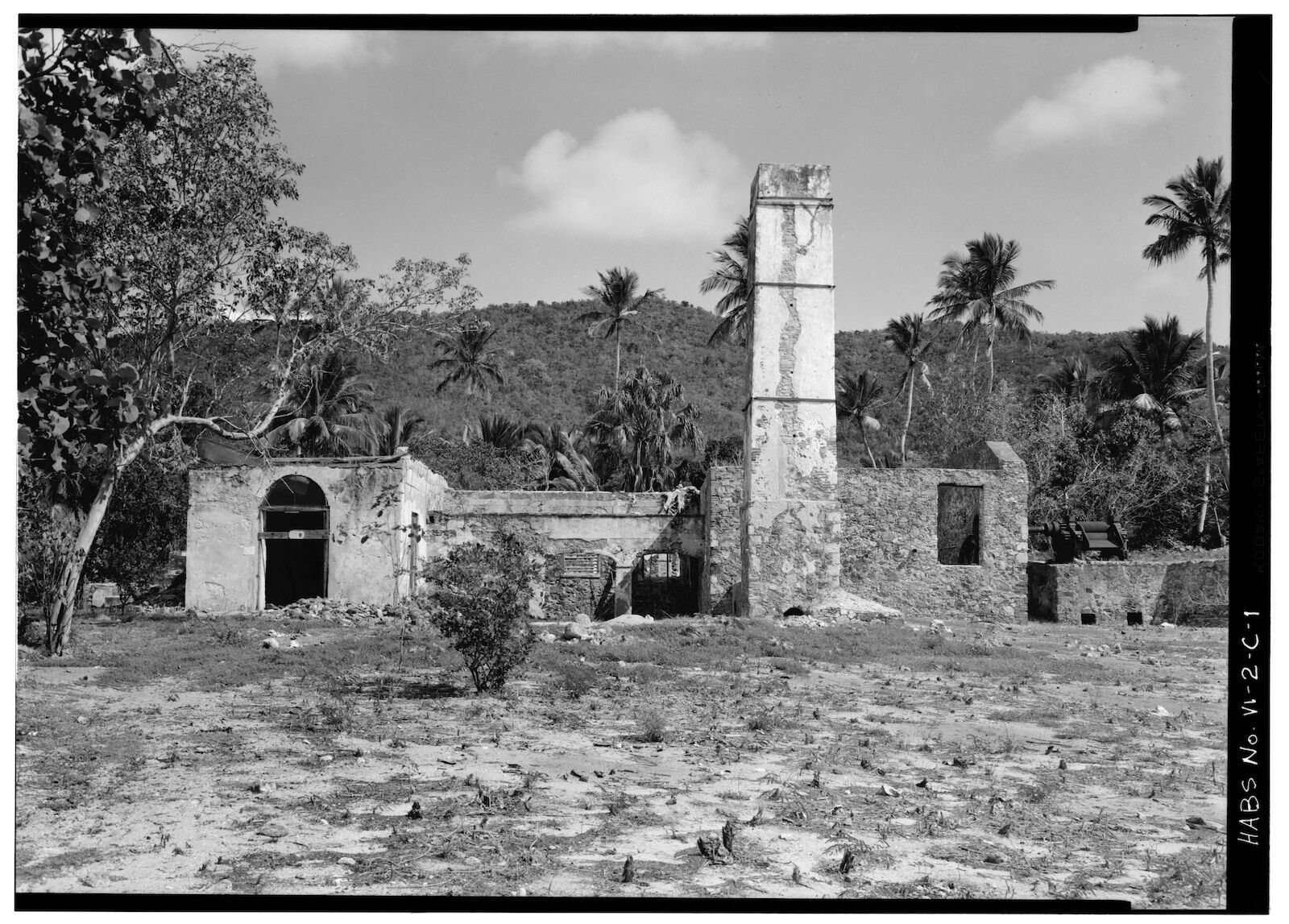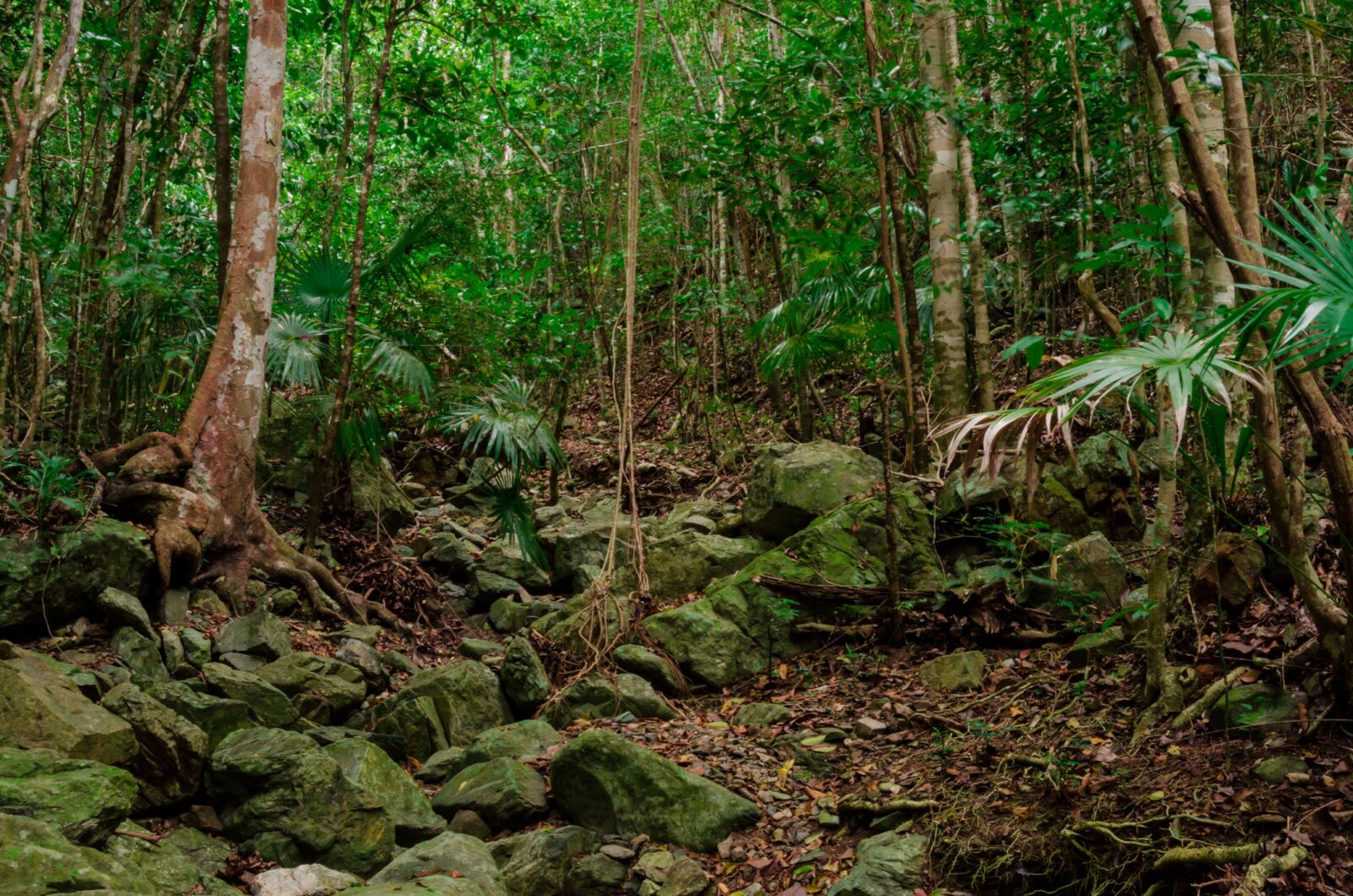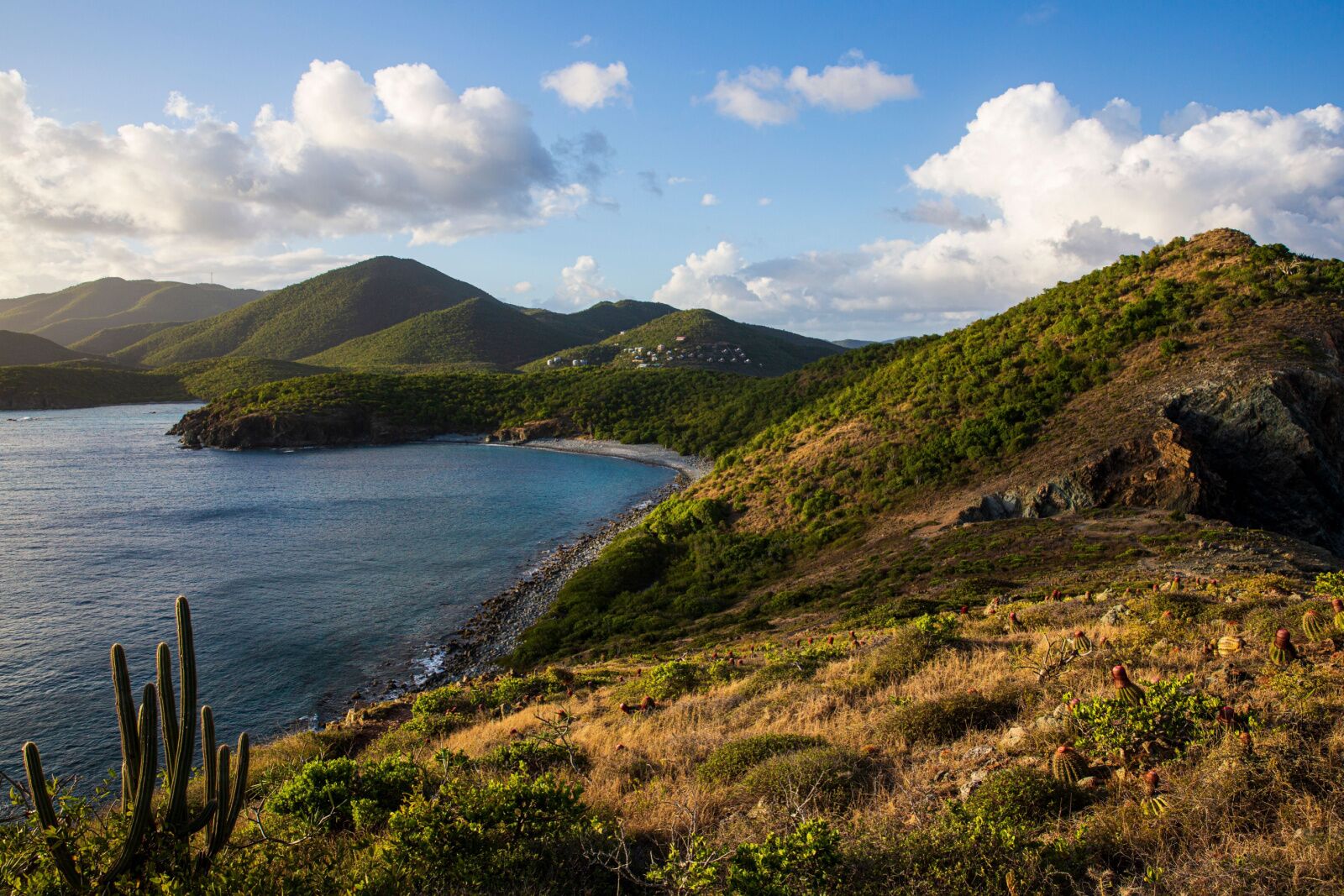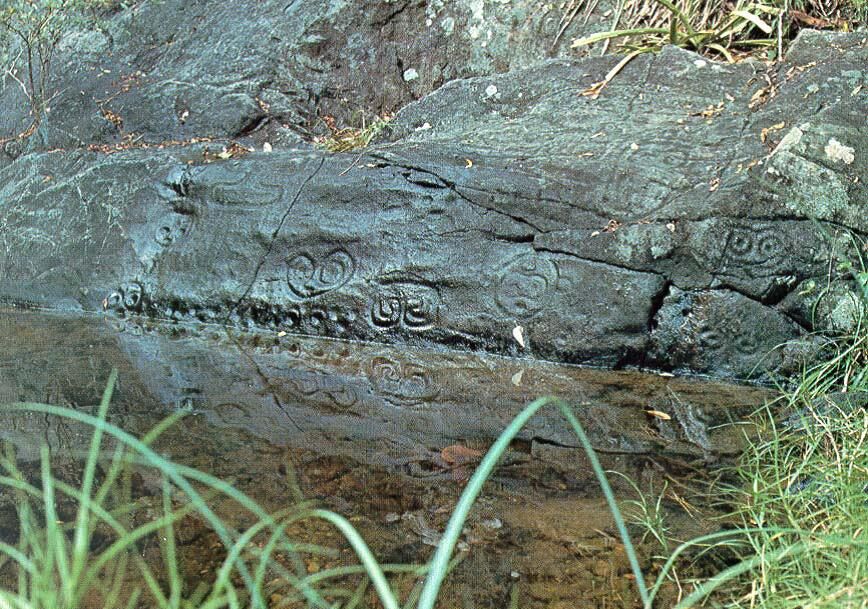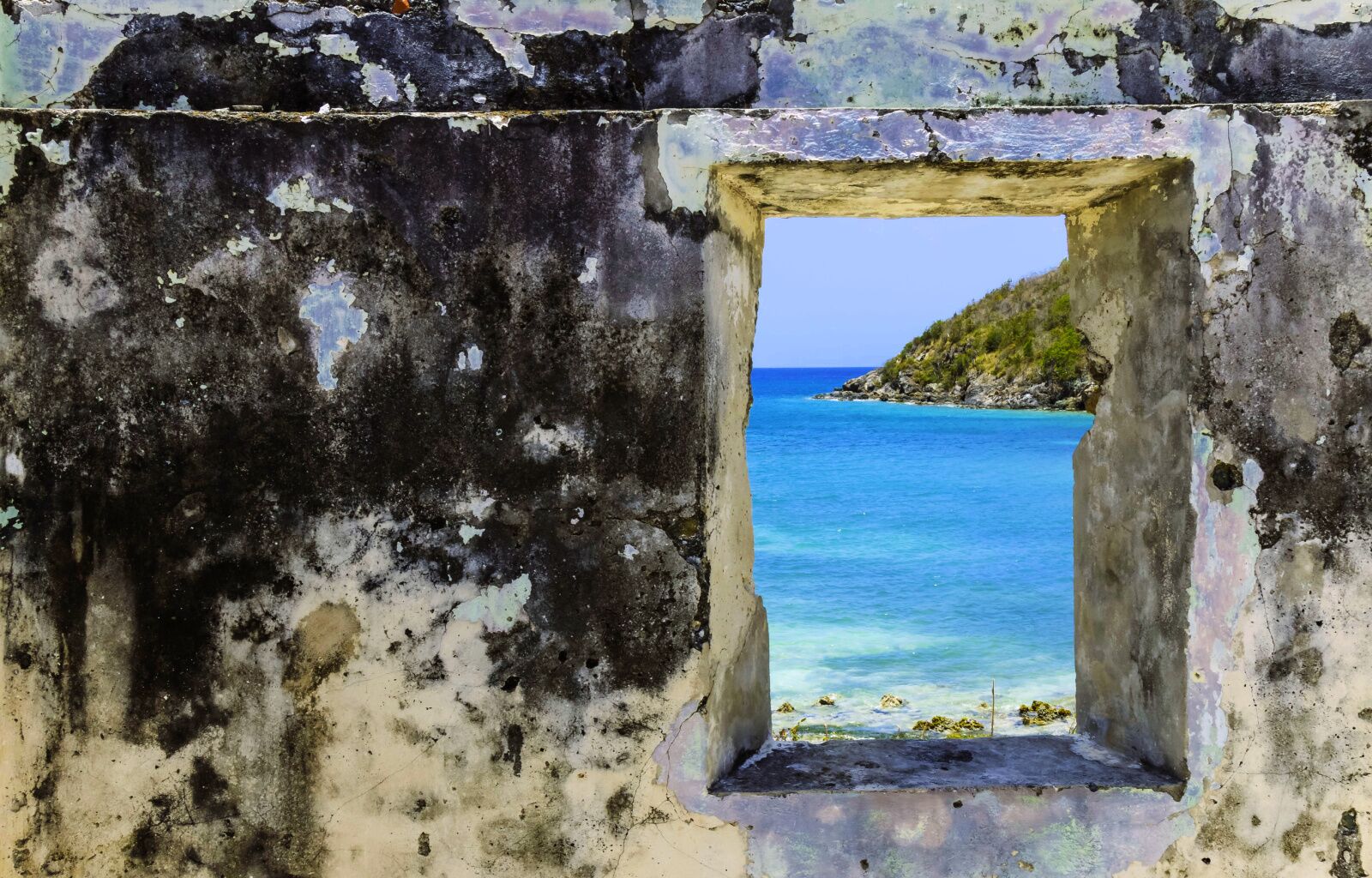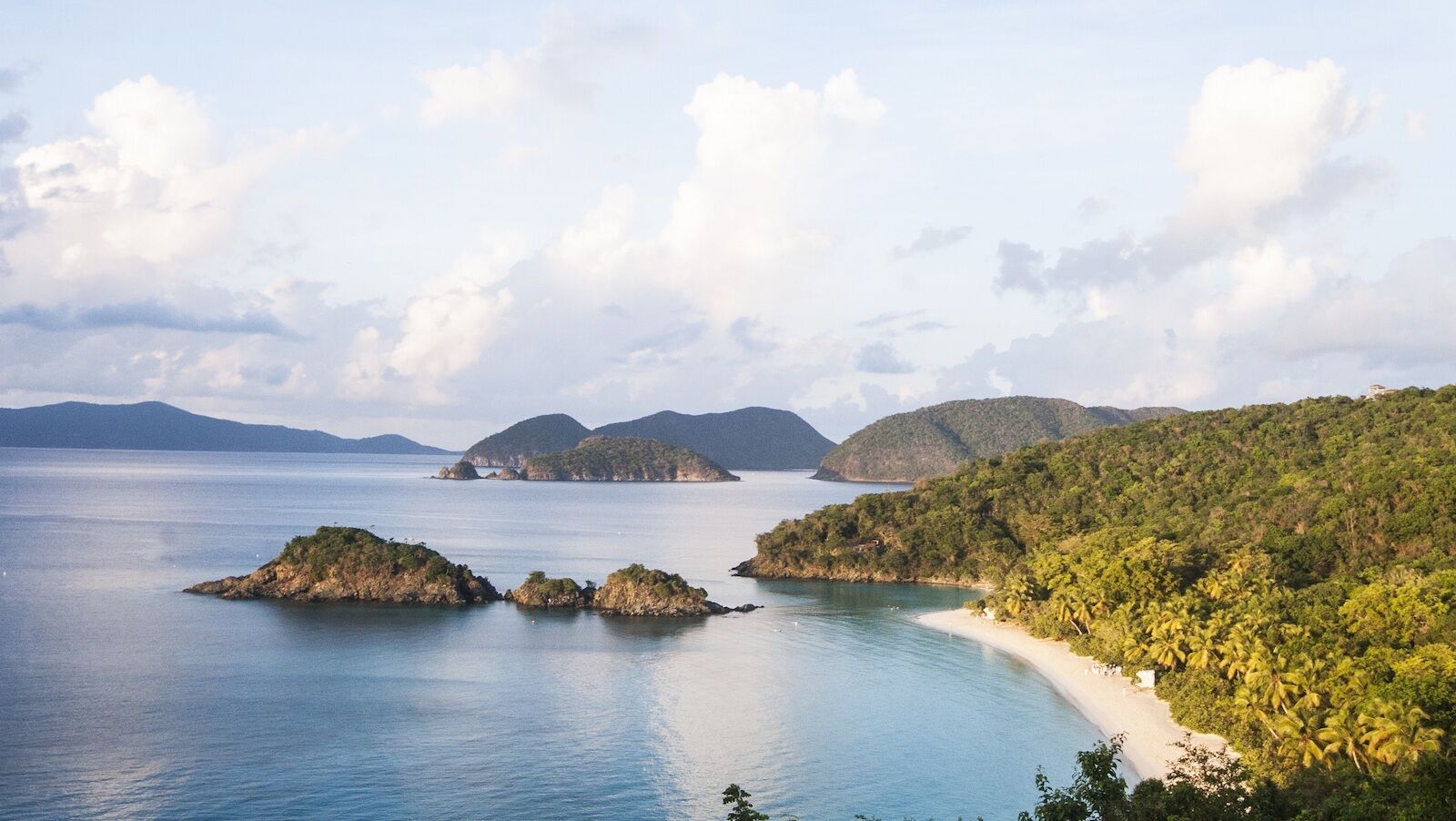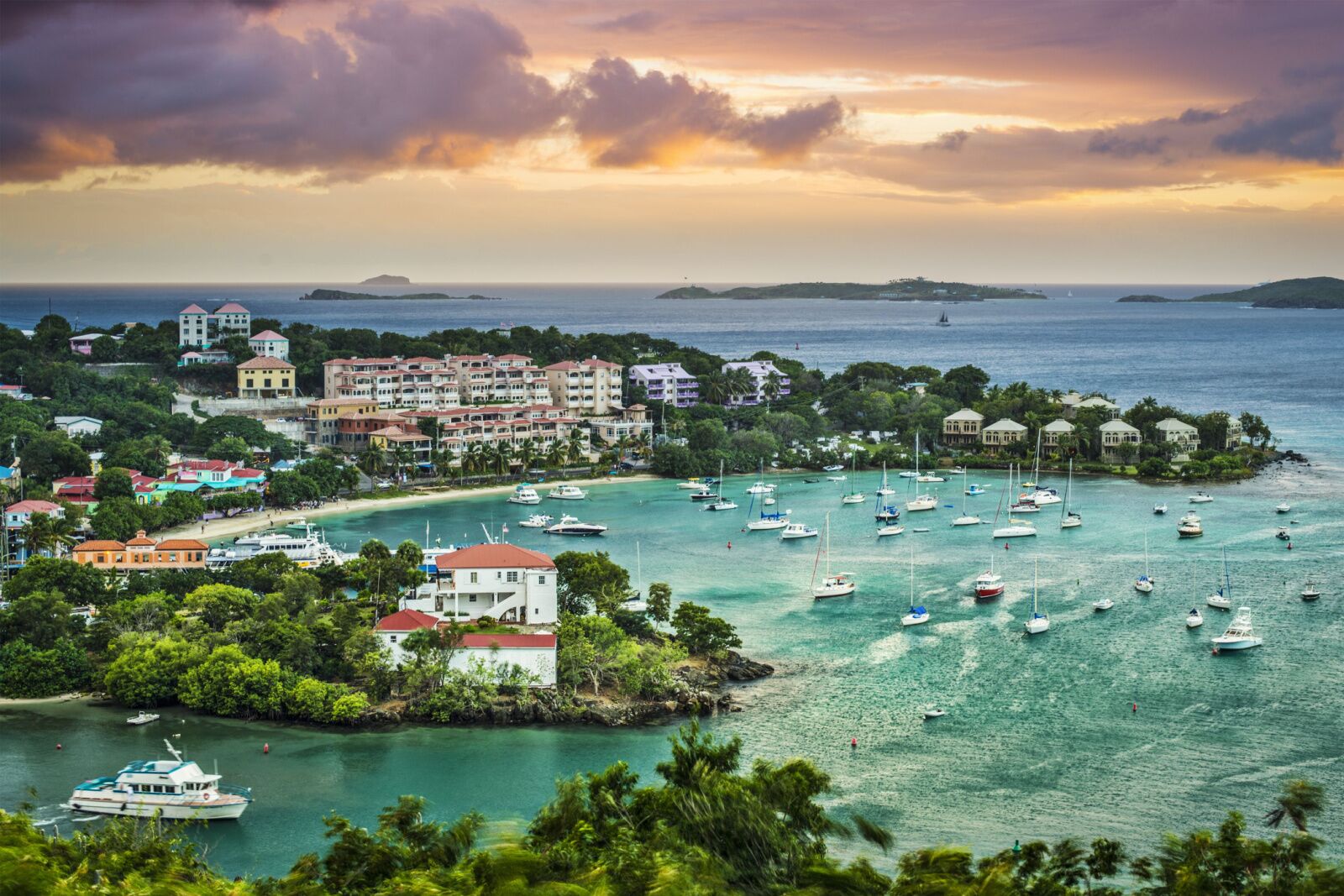Sitting 1,106 miles southeast of Miami, Florida, is one of the United States’ most remote and protected paradises: Virgin Islands National Park, in the US Virgin Islands. It covers two-thirds of the 20-square-mile Caribbean island of St. John and is a surreal tropical paradise, defined by lush hillsides sloping down to beaches with powdery white sand.
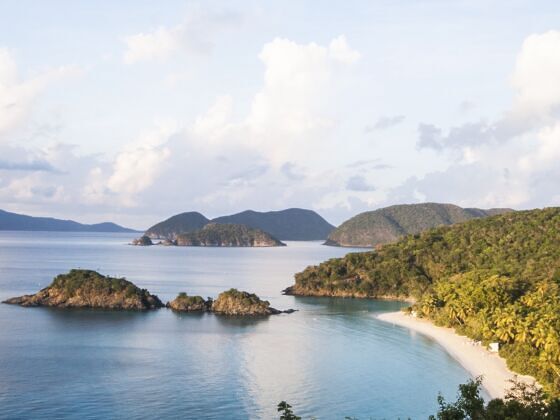
Everything to Know About the Reef Bay Trail, One of the Caribbean's Best Hikes
While the beauty of this national park certainly attracts beachgoers, it’s also popular among hikers drawn by the potential to explore more than 20 miles of hiking trails. And if there’s one essential trail hikers absolutely won’t want to miss in Virgin Islands National Park, it would be the Reef Bay Trail. The full out-and-back trail is about six miles long, and the experience of hiking Reef Bay takes you deeper into St. John’s history and culture than any other offering on the island.
-
- The history of the Reef Bay Trail
- Parking, packing, and other logistics
- Sights along the trail
- Other hikes in Virgin Islands National Park
- The best time to visit St. John
- How to get to Virgin Islands National Park
- Getting around on the island
- Where to stay on St. John
History of the Reef Bay Trail
The former sugar factory at Reef Bay. Photo: Library of Congress/Public Domain
The Reef Bay Trail takes hikers through history, following the footsteps of people who have passed through St. John over the centuries. That ranges from the pre-Columbian Taino people to Danish colonizers and enslaved Africans.
The Taino first came to St. John between 1,000 to 1,300 years ago from South America, bringing skills like agricultural cultivation, building, and pottery making. Taino communities settled in various locations around the island, including Cinnamon Bay and Coral Bay, but gathered at Reef Bay to perform spiritual rituals.
The Taino mysteriously disappeared from St. John in the mid-1400s, just before Christopher Columbus arrived in the Virgin Islands. A period of European colonization followed, and by 1718, St. John was part of the Kingdom of Denmark. Slave labor was prevalent to produce sugarcane and other crops.
The Reef Bay Valley comprised 12 plantations, which were later consolidated into five larger units. Sugar production peaked in the 1770s, a time during which more than 400 enslaved people lived and worked at Reef Bay Valley estates.
After emancipation in 1848, a small population of former slaves continued to live in Reef Bay at the remaining plantations. Agricultural activity continued at the Par Force and Little Reef Bay estates into the 20th century, with around 25 people living in Reef Bay in 1900. The population declined in the following decades, and in the 1950s, Reef Bay Valley became part of Virgin Islands National Park.
Reef Bay Trail planning, packing, and parking
Photo: Kelly vanDellen/Shutterstock
You can hike the Reef Bay Trail either on your own or with a guided tour. There’s roadside parking near the trailhead, off Centerline Road near mile marker 5. The lot isn’t huge, so try to get there early and avoid weekends to ensure you can find a spot (or try another form of transportation in the park).
This moderately difficult trail weaves through a forest with plenty of tall, shade-giving trees. The six-mile round-trip hike can be rocky, and sometimes slippery as it descends 900 feet into the Reef Bay valley, eventually leveling off into flat dirt before reaching pebbly Reef Bay Beach.
This isolated beach is a peaceful place to eat lunch before beginning the return trip, especially as you’ll want the extra energy for tackling the uphill climb back to the trailhead. Bring plenty of water – at least one 32-ounce bottle, but ideally two. Many hikers also carry swimsuits and snorkel equipment to explore the gentle waters off Reef Bay. Bug spray may also be helpful, as are a lightweight SPF shirt to protect your skin and extra reef-safe sunscreen. You’ll probably want to wear a closed-toe hiking shoe with good traction to ensure you keep your footing on mud or wet roots.
For a deeper but still relaxing experience, you can join a seasonal guided hike with Friends of Virgin Islands National Park. Knowledgeable park rangers will bring the trail to life by pointing out useful plants, sugar plantation ruins, and other historical sites during the slow-paced walk.
The best part of a guided tour may be that transportation is included to and from the Cruz Bay Visitor Center, with a return trip via boat from Reef Bay Beach. That means you’ll only need to hike the three miles in, skipping the return hike’s strenuous ascent. And you won’t need to fight for parking at the trailhead.
Sights along the Reef Bay Trail
Photo: BlueBarronPhoto/Shutterstock
Hiking the Reef Bay Trail is a chance to see what St. John was like before the island was a vacationer’s dream. You’ll pass under a giant Kapok tree, which the Taino used for stuffing mattresses and making early life preservers, and canoes. You’ll also find the Bromelia pinguin, or wild pineapple (which resembles an extra-spiky aloe plant) along the trail, which was used in the past as natural fencing. Along the trail, there are a few park service signs sharing information about the history and surroundings.
More tangible man-made creations also exist along the Reef Bay Trail. Just before the beach is the Reef Bay Sugar Estate, which remained operational to some extent into the 1900s. You can wander through the old factory’s large brick rooms, imagining the sweltering heat coming off the copper kettles during the height of sugar production.
Photo: Ken Wild/NPS/Public Domain
But the main star of this hike is the section of mysterious petroglyphs left behind by the Taino. To find them, turn right off the Reef Bay Trail about a half-mile before Reef Bay Beach. Follow the level, earthen path for about .25 miles until you encounter pools of water on large rocks fed by a gentle waterfall. Look carefully at areas where the rocks meet the shallow water, and you’ll see the images carved by Taino people sometime between 900 and 1500 BCE.
It’s not a coincidence that these symbols reflect into the water below. This was considered a sacred spot, so the Taino used the reflections during religious rituals to commune with and seek wisdom from their ancestors.
Other Virgin Islands National Park hikes
Photo: Scott Connor/Shutterstock
There are about 20 hikes in Virgin Islands National Park, many of which afford gorgeous coastal views of the sparkling Caribbean Sea.
- Ram Head: (2.3 miles, 223-foot gain) Follow this out-and-back trail to the edge of a peninsula with panoramic sea views looking toward St. Croix. The trail lacks shade, so cool off from the hot sun at neighboring Salt Pond Beach afterward.
- America Hill: (1.2 miles, 413-foot gain) Across from Cinnamon Beach’s lengthy stretch of white sand on North Shore Road is the trailhead for this steep hike up the America Hill Trail. It’ll make you sweat, but at the top, you’ll be rewarded for your efforts with views of Maho Bay Beach out to the British Virgin Islands, and the interesting remains of a pink estate.
- Peace Hill: A mini-hike with a giant reward, this .1-mile uphill trek leads to 180-degree views of the neighboring Hawksnest Bay and Trunk Bay beaches. Don’t forget to explore the stone windmill ruins on the hilltop, but watch your step for donkey poop.
When to visit
Photo: NPS/Anne Finney/Public Domain
High tourist season in Virgin Islands National Park spans from December to April, with the weeks over Christmas and New Year’s being the busiest. During this time, temperatures hover between 84 and 85 degrees Fahrenheit and average rainfall is the year’s lowest.
Avoid the winter crowds by visiting the island from May through July or in November (the wettest month) for a more relaxed atmosphere and better prices. While the summer temperatures can be intense, reaching the upper 80s F, the ocean is at its warmest.
Low season is between August and October and coincides with hurricane season, with the highest chance for trip-disrupting tropical storms with more rainfall. During this time, many restaurants and tour operators temporarily close, but you won’t be fighting for good beach spots or bumping elbows on trails.
How to reach Virgin Islands National Park
Virgin Islands National Park is on St. John, which does not have its own airport. Visitors should fly into Cyril E. King International Airport on neighboring St. Thomas and take the 20-minute ferry between the two islands.After landing, head to the taxi stand outside the airport to take the 30-minute shuttle across the island to the Red Hook ferry dock. Ferries depart every hour on the hour and cost $8.15 each way and $4 for each bag. You can buy tickets online, but it’s not necessary, as they’re available for purchase at the ferry terminal.
Getting around Virgin Islands National Park
Taxis are available on the island of St. John, especially in Cruz Bay and near the popular north shore beaches. Taxis are usually easy to find and the fares are set across the island, so you don’t need to worry about getting overcharged.But for many visitors who want the flexibility and freedom to go where they want (and want to be able to carry beach towels and snacks in their cars), the best way to get around is by renting a car. Rental car companies like St. John Car Rental offer online booking and are just steps away from the Cruz Bay ferry dock for easy pick ups and returns.
If you rent a vacation home, you’ll want to check with your rental listing in advance to ask about access. Some vacation rentals can only be accessed with a 4WD vehicle, in which case you’ll need to rent one of the many Jeeps you’ll see cruising around the island.
Where to stay on St. John
Photo: ESB Professional/Shutterstock
There aren’t many hotels on St. John since the island’s protections ensure development stays minimal. That said, there are plenty of comfortable lodging options on the island.
- Cruz Bay Boutique Hotel: An eco-friendly, mid-range boutique hotel in Cruz Bay, walking distance from the ferry terminal. There’s no pool, but you can walk to several beaches
- The Westin St. John Resort Villas: A gorgeous all-villas resort with a large private beach, activities and amenities on site, and a massive pool and pool bar. Rates start around $390 per night in the low season but can be more than double that when it’s busy.
- Lovango Resort & Beach Club: A hotel on a legit private island with five-star glamping, treehouses, cottages and villas. Ferry service is complimentary, as are snorkeling, kids club programs, daily breakfast, and more. It’s technically on Lovango Cay, but the ferry to St. John only takes about 10 minutes.
With so few hotels, most visitors to Virgin Islands National Park opt to stay in villas, cottages, and other vacation rentals. There are tons of great Airbnbs on the island, or you can book with a local company like St. John Villa Rentals if you’d rather deal with a local booking manager.
